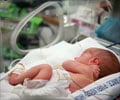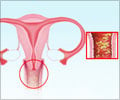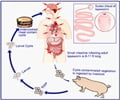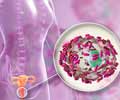Physicians can appropriately and accurately use laboratory tests for the diagnosis of infectious diseases thanks to a new guide developed by the Infectious Diseases Society of America.

Laboratory diagnoses directly affect patient care and outcomes, as well as hospital infection control, patients' length of stay in the hospital, costs and laboratory efficiency.
"Getting the right diagnosis is contingent upon laboratory results that are accurate and clinically relevant," says Ellen Jo Baron, PhD, who worked with J. Michael Miller, PhD, to shepherd the guide to completion after its inception by Gary Doern, PhD. "Physicians, their staff and microbiologists must communicate and work together to ensure the best outcome for patients, and this guide aims to help facilitate this collaboration."
Divided into sections on anatomic systems (including infections of the bloodstream, cardiovascular system, central nervous system, eyes, soft tissue of the head and neck, upper and lower respiratory system, gastrointestinal tract, abdomen, bone and joints, urinary tract, genitals and skin and soft tissues) and etiologic agent groups (tickborne infections, viral syndromes, blood and tissue and parasite infections), the guide helps physicians decide what tests to request when they suspect specific agents are causing disease. It also provides targeted recommendations and precautions regarding selecting and collecting specimens, detailing what is required for various cultures and tests, as well as the appropriate collection device, temperature and ideal transport time.
The guide suggests 10 tenets of specimen management that everyone involved – from physician to nurse to laboratory scientist – should follow for good patient care. These include:
- Specimens of poor quality must be rejected or results could be compromised.
- Physicians should not demand a report of "everything that grows" as this could result in an inaccurate diagnosis.
- Avoiding contamination of specimens is key, and careful collection is crucial.
- The laboratory requires a specimen, not a swab of a specimen, which may not hold enough infected material to ensure an accurate diagnosis and may be easily contaminated.
- The laboratory must follow its procedure manual or face legal challenges.
- A specimen should be collected prior to administration of antibiotics, presence of which could lead to misleading results.
- Susceptibility testing should be performed on clinically significant isolates, not all microorganisms in the culture.
- Lab results should be accurate, significant and clinically relevant.
- The laboratory – not the medical staff – should be allowed to set technical policy. Good communication and mutual respect will lead to collaborative policies.
- Specimens must be labeled accurately and completely (for example: dog bite wound, right forefinger).
Guidance provided in the document is not intended to take the place of a doctor's judgment, but rather to support the decision-making process, which must be individualized according to each patient's circumstances.
Advertisement
Source-Eurekalert









